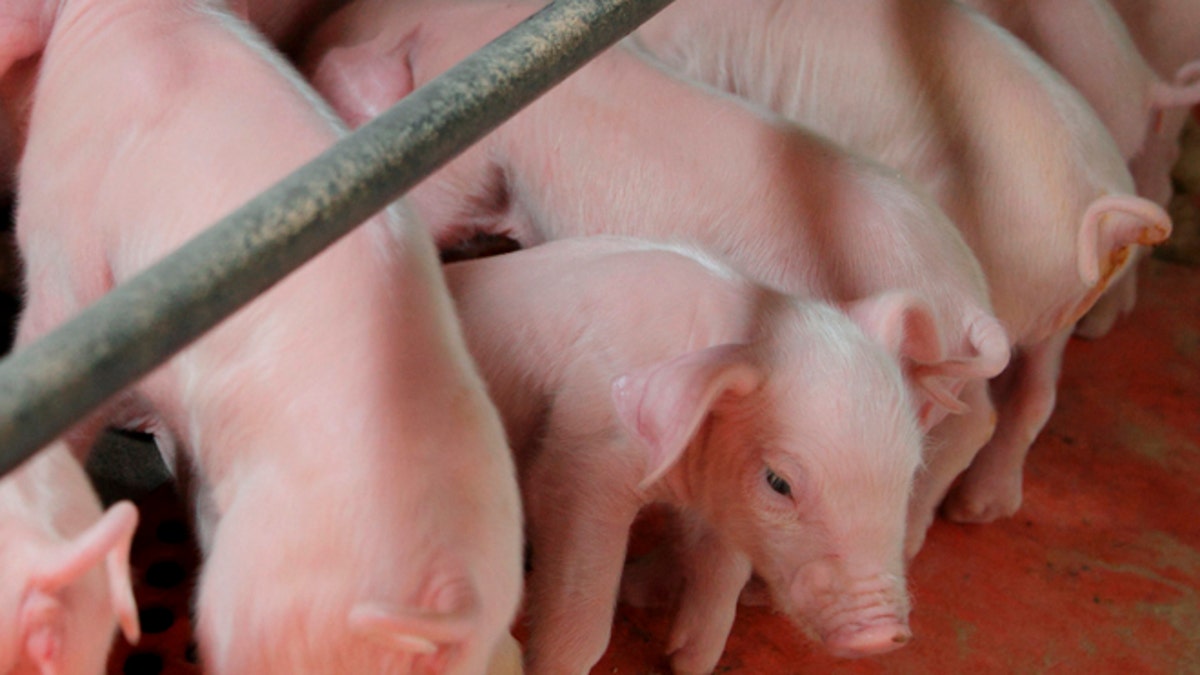
Newborn piglets suckle at Whiteshire Hamroc farm in Albion, Indiana March 16, 2012. The animals here at the Whiteshire Hamroc farm have been bred for one purpose: to be flown halfway around the world, on a journey fueled by China's appetite for food independence. In a country where pork is a culinary staple, the demand for a protein-rich diet is growing faster than Chinese farmers can keep up. While Americans cut back on meat consumption to the lowest levels seen in two decades, the Chinese now eat nearly 10 percent more meat than they did five years ago. Picture taken March 16, 2012. To match INSIGHT USA-CHINA/FOOD REUTERS/John Gress (UNITED STATES - Tags: FOOD AGRICULTURE BUSINESS ANIMALS) - RTR30Z07 (Reuters)
A virus that kills young pigs is roiling the U.S. pork industry, boosting prices in the $9 billion hog-futures market and threatening to create more pain for food shoppers.
The disease, which has spread to farms in 22 states, is cutting into pork supplies and prompting some traders and investors to wager that hog prices could set records this year. Lean-hog futures rose to a seven-week high a week ago and are up 6% since mid-December.
Porcine epidemic diarrhea virus, or the PED virus, appeared in the U.S. for the first time in April and has killed thousands of piglets since then. The virus, which causes severe diarrhea and vomiting, is fatal only to young pigs and poses no threat to human health or food safety, according to swine veterinarians. The U.S. strain is nearly identical to a version that curbed hog production in China in 2012.
The extent of the impact is unclear because farms don't have to report incidents or death totals to federal regulators. Smithfield Foods Inc., the world's largest pork producer, and other meatpackers estimate that about 10% of the nation's sows, or adult female hogs, have been infected by the virus, which can spread to their offspring.
Smithfield, a unit of China's Shuanghui International Holdings Ltd., said last month the virus could result in a loss to U.S. pig production this year of two million to three million head, or up to 3% of the industry's total. Hormel Foods Corp., the maker of Spam, warned recently its earnings for fiscal 2014 could be affected by "potentially volatile hog costs" due to the virus.
To ward off the disease, many U.S. hog farmers are redoubling safety practices, including disinfecting equipment and workers' footwear. But many say they find it difficult to prevent.
"This is the toughest disease we've ever gone through," said Mike Brandherm, a general manager with Hitch Pork Producers, a Guymon, Okla., livestock producer that lost 30,000 piglets in six weeks in a 2013 outbreak. "It was stunning how fast the disease spread. You feel helpless."

